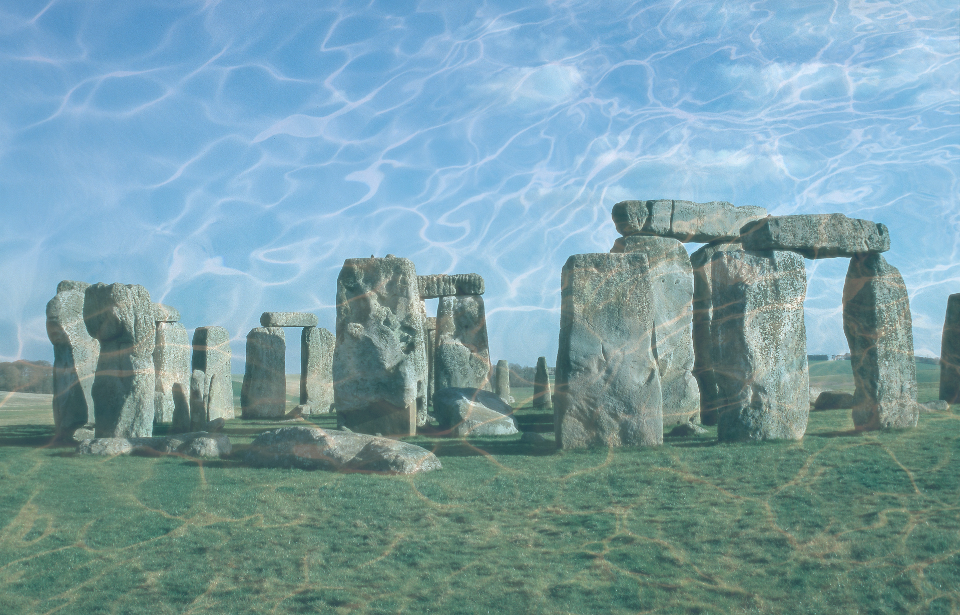Stonehenge, the iconic prehistoric monument in England, continues to baffle experts worldwide. Despite numerous studies, the exact purpose and construction techniques remain subjects of debate. This ancient site, with its massive stones arranged in a circular pattern, stands as a testament to the ingenuity of our ancestors and the mysteries they left behind. However, a new mystery, much like that of Stonehenge, has been uncovered across the pond.
A new discovery in Lake Michigan
A 9000 year-old Stonehenge-like structure found under lake Michigan :
Archaeologists found something much more fascinating than they got credit for when searching under the waters of Lake Michigan for shipwrecks: they uncovered a rock with a prehistoric carving of a mastodon, as… pic.twitter.com/lxzRG4pXkM
— Archaeo – Histories (@archeohistories) April 10, 2024
An underwater stone formation was discovered beneath the waters of Lake Michigan in 2007. This formation, located near Traverse City, Michigan, predates Stonehenge by approximately 5,000 years. A team of archaeologists, led by Mark Holley from Northwestern Michigan College, stumbled upon this site while surveying the lake bed.
Holley described the discovery as completely unexpected, made at a depth of about 40 feet (12.1 meters). The stones, some weighing up to 3,000 pounds (around 1,360 kilograms), were deliberately arranged in a circular pattern. This formation, about 40 feet in diameter with an inner circle of 20 feet, is composed of locally sourced granite and is estimated to be around 10,000 years old, making it one of the oldest known in North America.
Mysterious origins and theories
There’s a Stonehenge-like structure under Lake Michigan that’s over 9000 years old.https://t.co/e3OU6OfwKH pic.twitter.com/4I2tynmKFK
— ᴋʟᴀᵾs (@tinyklaus) February 24, 2023
Despite their similarity in size and shape to the stones of Stonehenge, the origins of the Lake Michigan stones are less clear. “Whilst they do seem to form a perfect geometric shape, they aren’t stacked or connected in the same way,” explained scientist Rob Nelson in an episode of Discovery UK‘s “American Stonehenge.” He noted that while prehistoric tribes roamed the Great Lakes region for thousands of years, very little is known about them, and there is no record of anything resembling this formation.
Nelson interviewed a man named Hank, a descendant of the Anishinaabe people, one of the region’s earliest inhabitants. Hank believes his tribe’s prehistoric hunter-gatherer ancestors placed the stones there for a sacred purpose. “In Anishinaabe culture, we refer to stones as animate objects because they come from the mother, the Earth, who is alive,” he explained. This suggests the monument’s presence in the lake is evidence of long-standing cultural and spiritual practices.
Archaeological insights and advanced technology
10,000+ year old Stonehenge beneath Lake Michigan 🪨 pic.twitter.com/tS4IzF4cW2
— D’Pate🌿 (@bunno333_) January 3, 2023
Holley pointed out that the area was not underwater 10,000 years ago, implying that communities had settled on the spot where the stones were laid. “It would’ve been a wonderful place for people to live – near the coastline, close to resources, transportation’s easy,” he said. However, rising water levels flooded the Lake Michigan basin around 5,000 years ago.
Using advanced technology called “stereo photogrammetry,” Nelson and his team created a detailed 3D rendering of the stones. This revealed carvings, including an image of a Mastodon, an extinct ancestor of elephants and woolly mammoths. These carvings suggest that the site’s builders had knowledge of these massive mammals, possibly even hunting them.
Dr. John O’Shea, Curator of Great Lakes Archaeology at the University of Michigan, proposed that the formation could have been an ancient hunting structure known as a “drive lane.” He explained, “Humans have used drive lanes for thousands of years to herd large groups of animals along a set path towards a kill zone, where the hunters lie in wait.” If true, this challenges the conventional belief that early humans weren’t capable of creating such sophisticated structures.
More from us: The Musical Road in New Mexico Used to Play “America the Beautiful” but Those Days Are Almost Gone
Despite these fascinating insights, the precise purpose of the Lake Michigan stone formation and the identity of its creators remain a mystery. Like Stonehenge, it stands as a silent witness to a bygone era, inviting us to ponder the capabilities and intentions of ancient civilizations.
